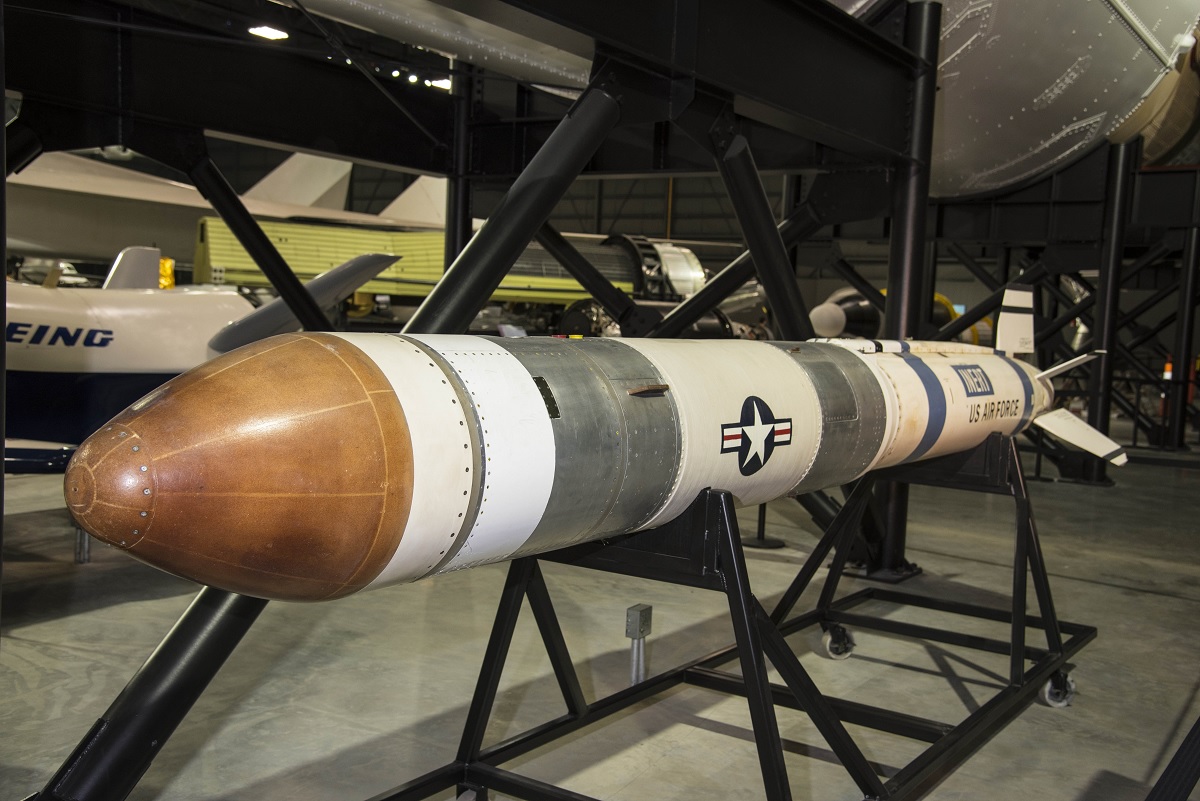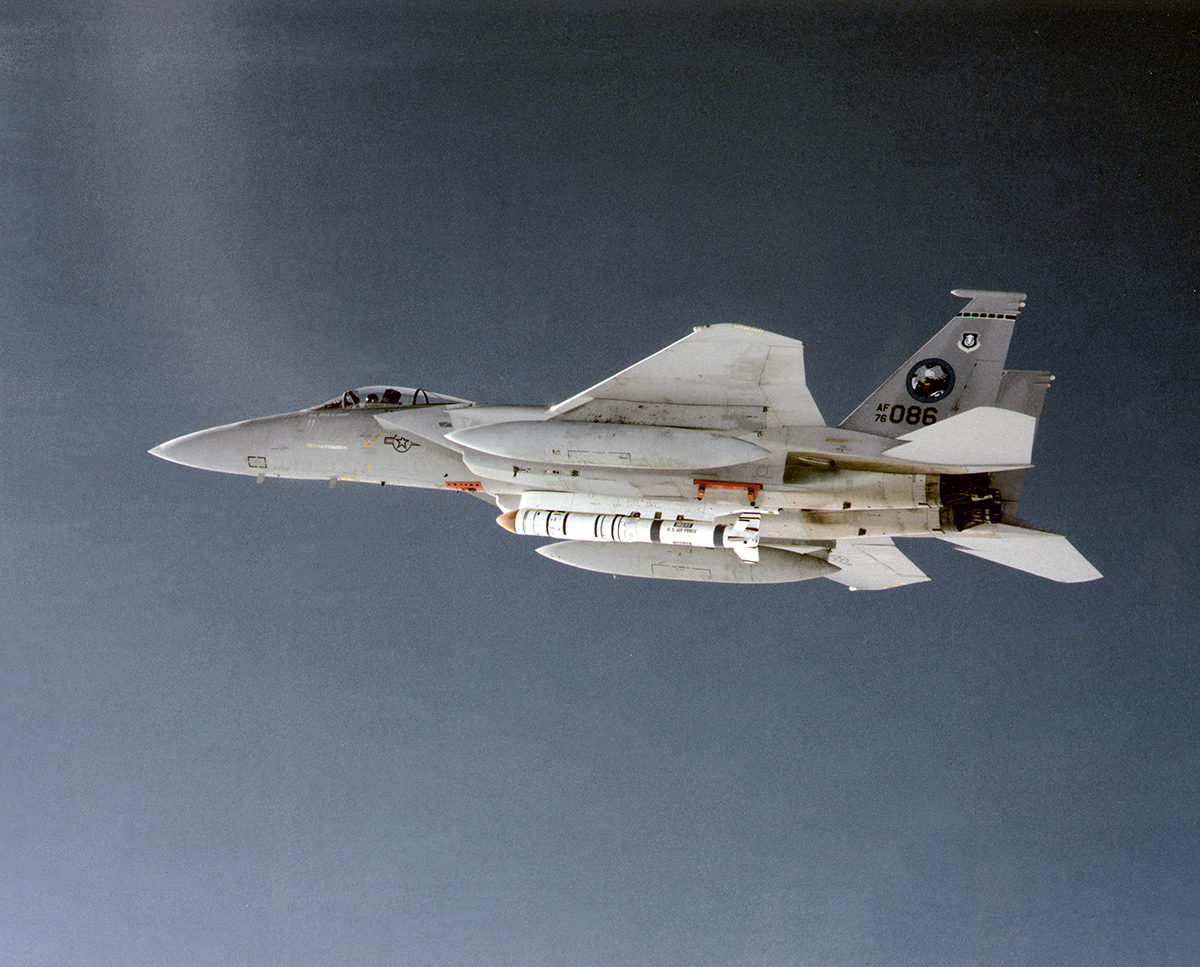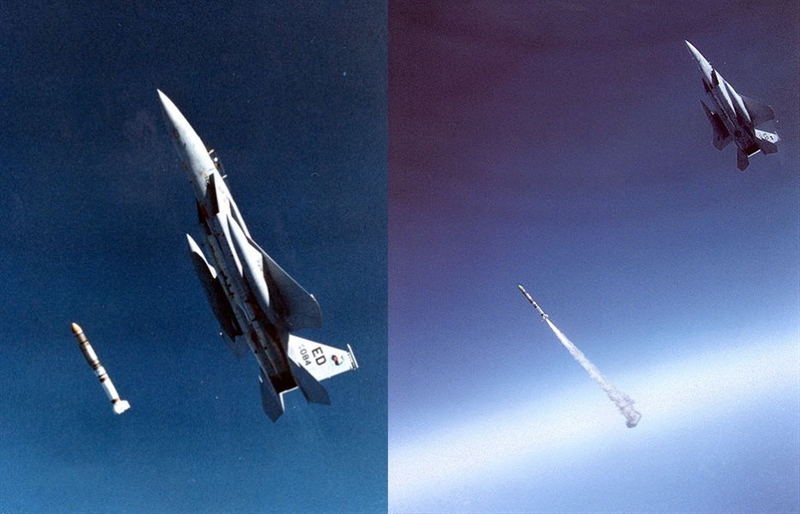The first anti-satellite missile launch from an F-15 occurred over the Pacific Ocean on January 21, 1984. No actual target was involved; the ASAT missile was launched toward a predetermined location in space
A high-performance, all-weather air superiority fighter with twin engines, the F-15. The Eagle, which made its debut in 1972, was first used by the U.S. Air Force (USAF) in 1974. The Eagle’s excellent acceleration and maneuverability are among its most remarkable features. It was the first American fighter to have an engine thrust greater than the aircraft’s basic weight, enabling it to accelerate while climbing vertically.
The Eagle was chosen to carry out the satellite-killing mission because of its high thrust-to-weight ratio (which was roughly 1,04 for a nominally laden F-15).
The United States foresaw the Soviet Union developing “killer satellites” that might obliterate crucial American communication and surveillance satellites in the late 1970s.

The Vought ASM-135A Anti-Satellite (ASAT) missile was selected as the weapon to neutralize this danger. The ASM-135A possessed a number of intriguing features, including the AGM-69 SRAM-A nuclear air-to-surface missile’s first stage and the absence of any warhead, which required direct contact with the target in order to be destroyed. This outcome was made possible by a tiny “homing kinetic kill vehicle” with IR guidance that had to direct the ASAT on the approaching satellite’s heat source.
The North American Aerospace Defense Command (NORAD) controllers would have employed their satellites to follow data of the target to ensure the exact position, as would be the case in a conventional engagement for an anti-satellite operation, to position the F-15 in a holding pattern. In response to NORAD’s order, the F-15 would have made a supersonic rise toward the target before launching the missile. According to Steve Davies and Doug Dildy in their book F-15 Eagle Engaged, the ASAT needed to be launched from an extraordinarily high angle (80,000ft) and high altitude (60-65 degrees).
Airborne experiments using modified F-15 fighters and “captive” (not launched) ASAT missiles with the designation CASM-135A were conducted since 1982.
The first launch of an anti-satellite missile from an F-15 over the Pacific Ocean occurred on January 21, 1984, following zoom tests carried out by two distinct F-15As from the 6512th Test Squadron. No actual target was involved; the ASAT missile was launched toward a predetermined location in space. The IR seeker was fixed to a star’s IR signature (officially referred to as a “celestial IR source”) and three further launches were made in 1985 after the initial one.

These tests, however, served as a warm-up for the one and only actual ASAT launch, which took place on September 13, 1985, when the F-15A 77-0084 destroyed the Solwind P78-1 satellite.
Since Soviet reconnaissance, maritime surveillance, and electronic intelligence satellites were frequently launched into polar orbits, the Solwind P78-1 spectrometer satellite made the ideal target simulator until it was rendered useless in 1985. The Solwind was launched into polar orbit in February 1979 as a spectrometer satellite.
The F-15 was piloted by Maj. Wilbert D. “Doug” Pearson who launched the missile during the operation, which was known as the “Celestial Eagle Flight,” from a height of 38,100 feet. The missile sped into space and zeroed in on the Solwind at a height of 345 miles. The Solwind was destroyed by the ASAT’s 11,000 mph speed and the 17,000 mph speed at which it collided with the satellite 320 miles above the planet.
Despite the test’s astounding success, the solar scientists’ outraged cries that they were still receiving data from the satellite drowned out the joy. Additionally, the ASAT test violated the recently negotiated US-USSR treaty that forbade the use of weapons in space. As a result of these worries, Congress had to reduce funds for the program, causing the USAF to stop developing the anti-satellite mission in 1988.
Pearson tells how he became the only fighter pilot in history to pull off the extraordinary accomplishment of taking down an orbiting satellite in the amazing video down below.
Photo by U.S. Air Force
Additional source: National Museum of the U.S. Air Force

